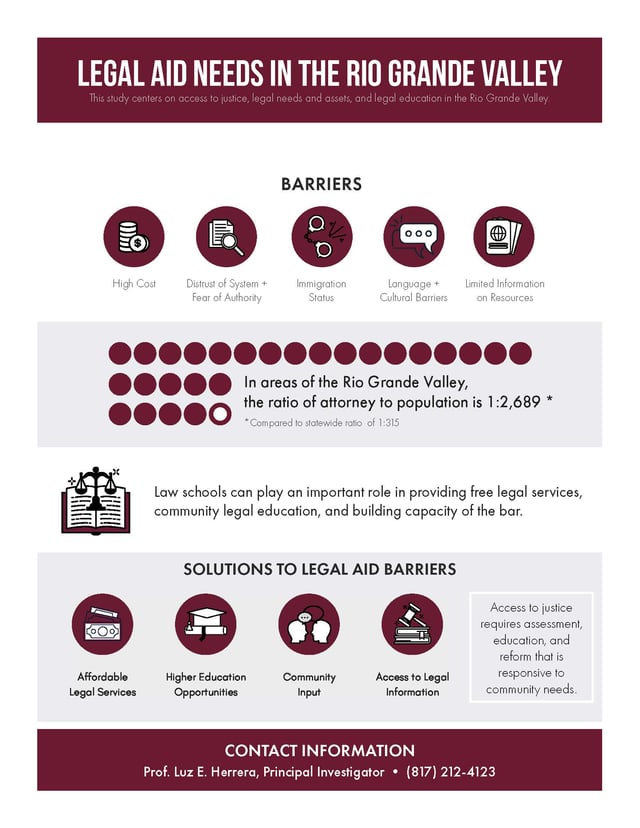A team of researchers from Texas A&M University released a comprehensive legal needs assessment of the Rio Grande Valley (RGV) region of Texas this week. The report presents the findings from a legal needs and oral history project simultaneously undertaken from August 2019 to September 2020 in the RGV.
The report provides a detailed discussion about access to legal information and documents pertinent to the legal needs of the region. More than 600 individuals participated in surveys, focus groups and interviews to create an overview of the historic legal-resource environment that exists for residents of the region.
“We are thrilled to be able to contribute to the first legal needs assessment in the Rio Grande Valley,” says Luz E. Herrera, Texas A&M Law professor and associate dean for experiential education.
“It was important for us to consult with community leaders and legal services consumers who understood the daily legal needs of individuals in the region” Herrera adds.
 The study found that information and services related to immigration, family and property law are major needs in the area. In addition, the cultural and political context of the region, particularly as it relates to immigration status, are significant obstacles to accessing information and assistance from the legal system.
The study found that information and services related to immigration, family and property law are major needs in the area. In addition, the cultural and political context of the region, particularly as it relates to immigration status, are significant obstacles to accessing information and assistance from the legal system.
Based on these findings, the report recommends:
- An expansion of resources to existing, local organizations and community workers
- A determination of how local legal education and awareness may assist in meeting gaps
- The development of accessible online directories of existing legal services in the region
- The introduction of new service models to offer free and affordable legal services
- The development of a statewide collaboration plan to deliver legal services to the region
“The study includes the results of research with community organization members, service providers, the legal community, health advocates and legislative staff who are working to direct much-needed resources to their counties,” says Amber Baylor, Texas A&M Law professor and director of the Criminal Defense Clinic.
“The study centers this expert guidance in detailing the resources and services necessary for people to protect and advocate for themselves in legal systems,” Baylor adds.
An oral history component also highlighted the importance of investing in educational resources to build stronger infrastructure that addresses the existing needs. It captures the historic legal-resource desert that exists for rural residents of the Rio Grande Valley.
“The fight for equity in higher education has a long history in Texas, and through our research we found that one of the most important struggles centered on bringing a law school to South Texas in the 1980s,” says Felipe Hinojosa, Texas A&M history professor.
“The Reynaldo G. Garza School closed in the early 1990s, but not without first shedding light on the systemic inequality of higher education funding that plagued border communities and those struggles continue to this day,” Hinojosa comments.
The full report can be read here. A more nuanced discussion of the research findings will be published in the Notre Dame Journal of Law, Ethics, and Public Policy in 2022.
About the T3 Project: This project was funded by the Texas A&M Triads (T3) grant – a multidisciplinary seed-grant program that is part of the President’s Excellence Fund. The T3 grant is designed to advance Texas A&M University’s commitments to “enhancing discovery and innovation and expanding impact on our community, state, nation, and world.”